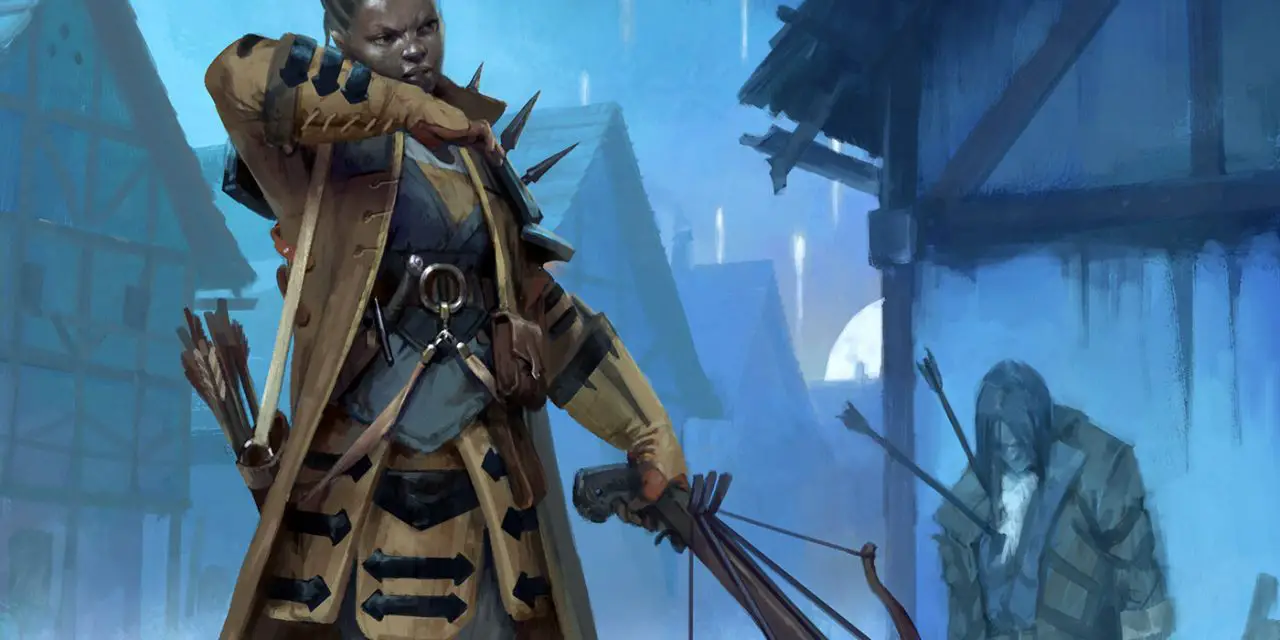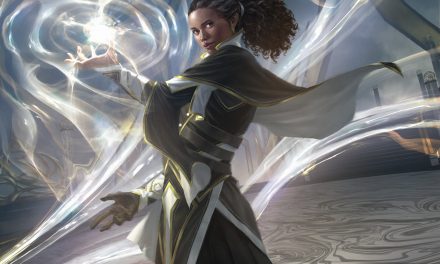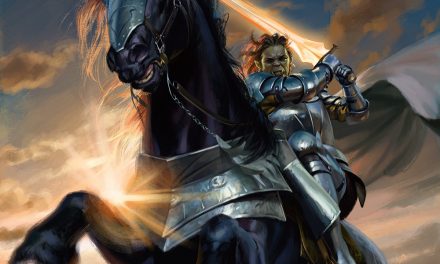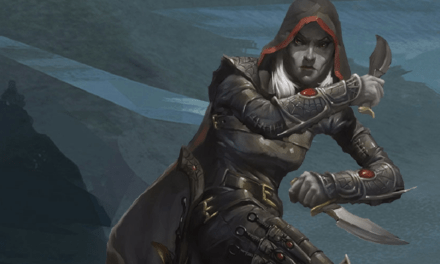It takes bravery and skill to stand against the most fearsome monsters in D&D, but thankfully the Monster Slayer Ranger has both!
Hunting liches, evil Fey, vampires, dragons, or other creatures that wield magic to further their own insidious goals, the Monster Slayer always comes prepared.
Think you’ve got what it takes to be the next Van Helsing? Ready to venture into the lair of fear itself and emerge victorious?
It’s worth taking a moment to make sure you’re prepared, but I’ve got your back!
This is the full guide to the Monster Slayer Ranger in D&D 5e!
What is the Monster Slayer Ranger in D&D 5e?
Standing toe-to-toe against the darkest magics in the world, these Rangers are trained in countering the spells and tricks of the foes they hunt.
Common creatures that are hunted by Monster Slayer Rangers include Liches, Mummies / Mummy Lords, Vampires, Dragons, Evil Wizards, Fiends, and Evil Fey.
Once a Monster Slayer learns of such a creature, they will stop at nothing to find and destroy them.
While nothing stops a Monster Slayer from hunting down a non-magical creature, they do tend to focus on those who use magic. A large part of Monster Slayer Rangers’ training is in countering such magical effects.
The Monster Slayer Ranger appears in Xanathar’s Guide to Everything alongside the Gloom Stalker and Horizon Walker subclasses.
Role in the Party
Monster Slayer Rangers focus on pumping out as much damage as possible against a single target. They want to get a lock on the biggest threat and relentlessly focus them down.
Generally speaking, this isn’t too different from your standard Ranger. What sets the Monster Slayer apart is their ability to deal with magic effects and spellcasting enemies.
Their focus on damage output means that they’ll certainly be investing heavily into their Dexterity ability. However, they do have access to some great spells and features that will also benefit heavily from a higher Wisdom score.
This means that Monster Slayers are perfectly capable of being good trackers, scouts, and survivalists in addition to being able to completely ruin their chosen enemy’s day.
Related: 5 Ways to Determine Ability Scores in D&D 5e
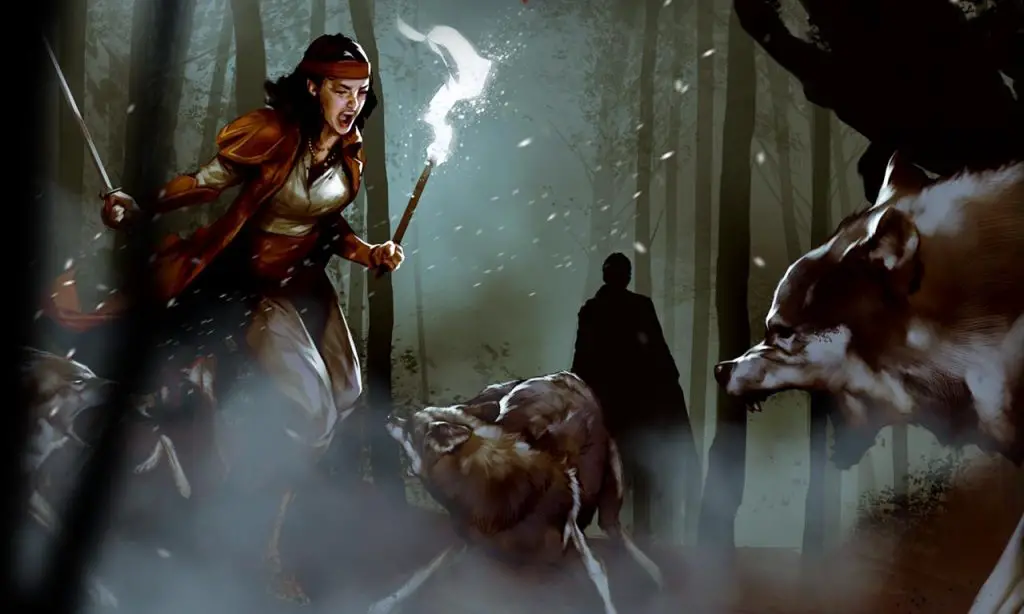
Monster Slayer Ranger Features 5e
The real core of the Monster Slayer Ranger’s features is their Slayer’s Prey feature. It’s solid and lets the Monster Slayer deal extra damage against their chosen target.
As they level up, the Monster Slayer’s other features will better help them deal with that enemy. From defensive bonuses to extra attacks, it’s all about picking the biggest threat and keeping the pressure on them.
With that said, let’s dive into the specifics!
Monster Slayer Magic (Level 3)
Choosing the Monster Slayer Ranger subclass gives you access to more spells as you reach certain levels.
These spells count as Ranger spells for you and do not count against the number of Ranger spells that you know. As with your other Ranger spells, Wisdom is your spellcasting ability for these.
| Ranger Level | Spell |
| 3 | Protection From Evil and Good |
| 5 | Zone of Truth |
| 9 | Magic Circle |
| 13 | Banishment |
| 17 | Hold Monster |
All in all, this is a decent selection of spells that really fits what the Monster Slayer Ranger is about.
You’ll get some great use out of Protection From Evil and Good. It’s a wonderful defensive buff, especially considering the types of creatures that you’ll no doubt be hunting.
Zone of Truth and Magic Circle are both more situational, but you’ll be glad you have them when the situation arises.
Your other two spells are excellent IF you have the Wisdom to back them up.
Banishment can be a great way to quickly end a combat encounter.
If you’re on the target’s native plane of existence, they’re still removed for enough time that you and your allies can deal with the other enemies and focus the target down when it returns. If you’re not on the target’s native plane, you can just send it back to where it came from altogether!
Hold Monster is one of the game’s best “save or suck” spells if the target can’t make its Wisdom saving throws each round. However, between it not working on Undead and your likely-low spell save DC, it’s a bit riskier to use.
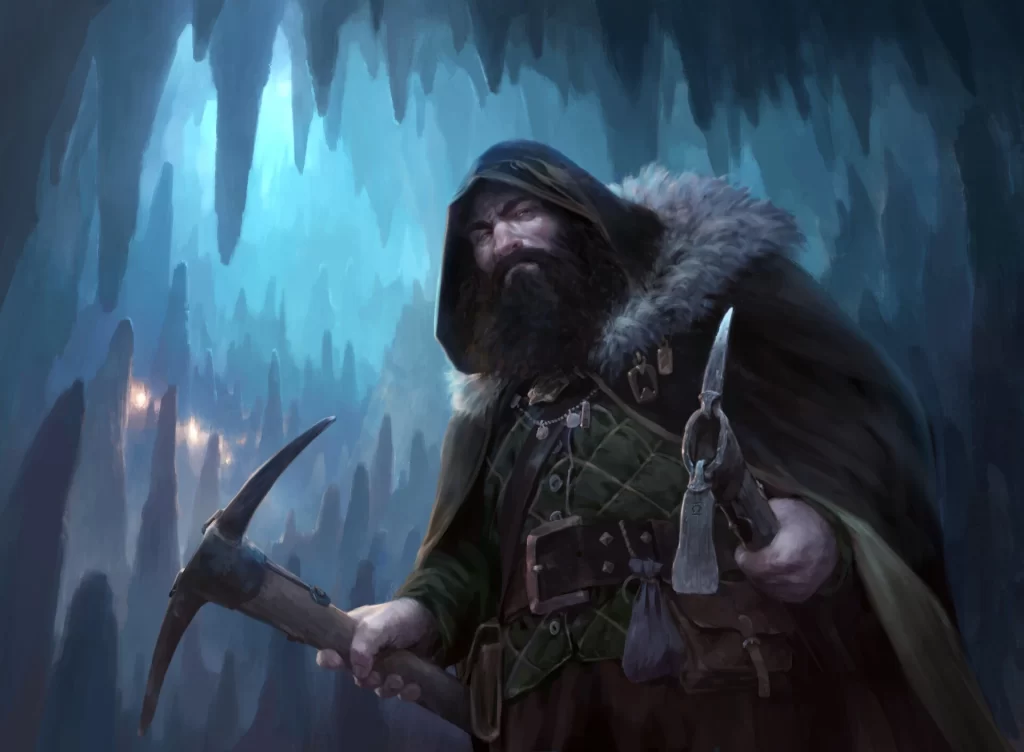
Hunter’s Sense (Level 3)
As a Monster Slayer Ranger, it really can’t be stressed enough just how dangerous the foes you’re hunting are.
Knowledge is power, so it pays to do your research. Thankfully, you can do so using only an action!
As an action, choose one creature you can see within 60 feet of you. You immediately learn whether the creature has any damage immunities, resistances, or vulnerabilities and what they are. If the creature is hidden from divination magic, you sense that it has no damage immunities, resistance, or vulnerabilities.
You can use this feature a number of times equal to your Wisdom modifier (minimum of once.) You regain all expended uses of it when you finish a long rest.
The best case for using Hunter’s Sense is if you’re hidden from the creature you’re targeting. It will rarely be worth it to use this in combat.
However, learning the creature’s immunities, resistances, and vulnerabilities and communicating that to your team can help you go into the fight with a winning strategy.
This is a nifty way of getting around requiring an Intelligence check to learn about a creature. Even if you were investing heavily into Intelligence, those checks can still fail. Now they’re handy as a backup or for knowledge that Hunter’s Sense doesn’t provide.
Just be wary that being hidden from divination magic counters Hunter’s Sense.
If a powerful vampire, for example, knows that you’re after them, they’ll likely be taking care to protect themselves with a Nondetection spell or effect.
Slayer’s Prey (Level 3)
For their final level 3 feature, the Monster Slayer Ranger gets their most important feature: Slayer’s Prey.
Not only is this a wonderful feature, but it also plays directly into two of the features you gain later.
As a bonus action, you designate one creature you can see within 60 feet of you as the target of this feature.
The first time each turn that you hit that target with a weapon attack, it takes an extra 1d6 damage from the weapon.
This benefit lasts until you finish a short or long rest. It ends early if you designate a different creature.
First things first, the wording of this feature is admittedly a little weird. To clarify, Monster Slayer Rangers can use Slayer’s Prey an unlimited number of times per day.
However, it can only be active on one creature at a time. It ends on the targeted creature once the Ranger finishes a rest or uses it on a new target.
You’ll notice that this is pretty similar to what Hunter’s Mark does.
While Slayer’s Prey doesn’t give you the tracking benefits of Hunter’s Mark, it doesn’t require concentration and isn’t a spell.
The best part? You can stack Hunter’s Mark with this feature!
That means that your first hit on your turn is dealing an extra 2d6 damage and any subsequent hits will still be dealing the extra 1d6 from Hunter’s Mark.
At the lower levels, this extra damage will be impactful but it starts to taper off as you level up.
While damage from Slayer’s Prey, unfortunately, doesn’t scale, it’s still a reliable feature and powers two of your other features.
Just be mindful that Slayer’s Prey and Hunter’s Mark are using two of your bonus actions.
I don’t know that I’d recommend picking up popular feats like Crossbow Expert or Two-Weapon Fighting that put even more demand on how you use your bonus actions.
Related: Action Economy in D&D 5e Explained
Regarding Favored Foe and Slayer’s Prey
Rangers got a lot of love in Tasha’s Cauldron of Everything and the optional Favored Foe feature is certainly no exception.
Favored Foe works similarly to Slayer’s Prey in that it adds extra damage to your first hit against the targeted creature each round.
Unlike Slayer’s Prey, however, this damage scales. It deals an extra 1d4 damage from levels 1 to 5, 1d6 damage from levels 6 to 13, and 1d8 damage from level 14 on.
Just keep in mind that Favored Foe does require you to maintain concentration like Hunter’s Mark does.
So, while Favored Foe does stack with the Slayer’s Prey feature, it will not stack with Hunter’s Mark.
While some might view this as redundant, personally I like having the options and flexibility that comes with them.

Supernatural Defense (Level 7)
Especially when it comes to the types of enemies that Monster Slayers hunt, you’ll have plenty of opportunities to use this feature.
Whether you’re trying to resist the charms of an evil Fey, the rotting curse effect of a mummy, or some other such effect, it’s always nice to have a bonus!
Whenever the target of your Slayer’s Prey forces you to make a saving throw and whenever you make an ability check to escape that target’s grapple, add 1d6 to your roll.
Keep in mind that Supernatural Defense only works when the creature forcing you to make a saving throw or escape their grapple is the target of your Slayer’s Prey feature.
That means you’ll want to prioritize keeping Slayer’s Prey on whatever enemy is most likely to prompt these rolls.
Because Slayer’s Prey can be used as much as you’d like, you only need to worry about keeping your bonus action free to make sure you’re prioritizing your targets accordingly.
Of course, don’t hesitate to put this on other creatures as necessary.
Just because you’re mostly geared towards dealing with enemies like vampires, evil wizards, and such, that doesn’t mean you can’t just as well focus your attention on other enemies like Beholders, Dragons, and Giants.
Magic-User’s Nemesis (Level 11)
Plenty of creatures that warrant the attention of a Monster Slayer Ranger are capable of casting powerful spells.
So, of course you’re going to have a way to defend against that!
When you see a creature casting a spell or teleporting within 60 feet of you, you can use your reaction to try to magically foil it. The creature must succeed on a Wisdom saving throw against your spell save DC, or its spell or teleport fails and is wasted.
Once you use this feature, you can’t use it again until you finish a short or long rest.
This is effectively a once-per-rest Counterspell. However, instead of you making an ability check to counter the spell, the enemy has to make a save against your spell save DC.
Naturally, the higher your Wisdom score is, the more effective this feature will be.
Fortunately, this can also stop a creature from teleporting away with a non-spell feature as well. That’s something that Counterspell otherwise wouldn’t be able to do.
All in all, Magic-User’s Nemesis is a great trick to have up your sleeve. You won’t be quite as good at countering spells as your party’s spellcasters, but it’s nice to have this “just in case” for those do-or-die moments.
Whether you’re foiling the enemy’s attempt to cast a huge spell or preventing them from getting away, they’ll definitely view you as a nemesis!

Slayer’s Counter (Level 15)
You’ve got no problem frustrating your enemies to no end. But what about when they decide to start focusing on you as well?
As it just so happens, that’s exactly what you want them to do now!
If the target of your Slayer’s Prey forces you to make a saving throw, you can use your reaction to make one weapon attack against the quarry.
You make this attack immediately before making the saving throw. If your attack hits, your save automatically succeeds, in addition to the attack’s normal effects.
Most spells in D&D 5e prompt some kind of saving throw which means that you should have no difficulty getting this extra attack each round. Well, as long as the enemy caster views you as a threat.
However, taking damage while you have a spell like Hunter’s Mark up will require you to make a saving throw to maintain concentration.
This would also qualify for you to use Slayer’s Counter. Though it’s probably not a bad idea to pick up the Resilient feat to make those Constitution saves easier.
There’s a major benefit to using ranged weapons to get the best use out of this feature.
In most combat encounters, you should be able to reliably attack whatever enemy you need to when using a ranged weapon. This is especially true if you’re trying to focus down an enemy spellcaster that’s hiding behind their allies.
With Slayer’s Counter, you want to make sure to keep the pressure on whatever enemy you’ve marked with your Slayer’s Prey feature. Bait them into attacking you and watch the damage pile up!
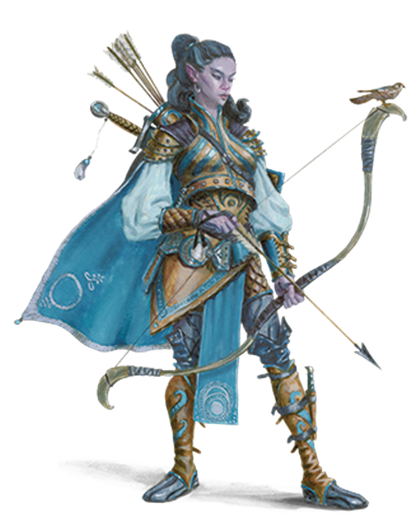
Connections
There is a ton of influence to pull from when making your Monster Slayer Ranger. The two that most immediately come to mind are Van Helsing and (for fans of The Witcher) Geralt of Rivia.
But don’t feel pressured into making a carbon copy of those characters.
Thankfully, both make great starting off points to explain what your character does and how they do it while giving you plenty of space to explore who your character is.
Monster Slayers don’t usually get into their profession because of some swanky internship. It’s almost always a very deeply personal thing.
After all, they’ve spent years honing their physical abilities while also learning everything they can about the most terrifying creatures and legends to ever exist. Most importantly, they’ve learned how to defend against them!
What was the defining moment that put you on this path?
There is a ton of potential here, especially if you’re playing an adventure like Curse of Strahd. Learning everything about a powerful vampire and venturing to slay them is about as classic and awesome as it gets!
I’d recommend really working with your DM as a Monster Slayer Ranger. You’ll be instrumental in helping them set up terrifying encounters and will have plenty of research and recon work to keep you busy!
You might even see if your DM is open to letting you use one of the Dark Lineages from the Ravenloft setting!
Is the Monster Slayer Ranger Good?
The Monster Slayer Ranger is a very focused subclass that fits a very specific niche.
Sure, they can function well against pretty much any type of enemy, but they really shine when they have something big and bad to focus on.
Ideally, that target is an enemy that will open up opportunities for the Monster Slayer to use their more defensive features. In most cases, these enemies will be some kind of spellcaster or otherwise magical being.
One of the greatest strengths of the Monster Slayer Ranger is how straightforward it is. For players (especially newer ones) who are looking for a subclass that doesn’t have a ton of moving parts, this is a good choice.
But generally speaking, I think the Monster Slayer Ranger works best for a specific kind of adventure.
If your group’s adventure focuses heavily on taking down terrifying supernatural creatures (à la The Witcher, for example), you’re in for a great time.
Personally, I would LOVE the opportunity to play one of these characters in a Ravenloft setting.
However, in a more general type of campaign, the Monster Slayer Ranger won’t typically have quite the same impact.
Related: Ranking Every Ranger Subclass in D&D 5e!
Conclusion – Monster Slayer Ranger in D&D 5e
Maybe it’s because I’m writing this as we’re getting closer to Halloween, but I just love the theme of the Monster Slayer subclass so much.
Its mechanics may be a bit rigid, but it still has all the flavor that I would want in a Van Helsing-type character!
I would have liked to see features that specifically help lock down certain types of monsters (similar to how the Oath of the Watchers Paladin does). But, then again, maybe that would make this even more of a niche option…
Anyways…
I hope you’ve found this guide to the Monster Slayer Ranger in D&D 5e helpful!
What are your thoughts on this subclass? Got questions or stories from your own campaigns? Let’s chat in the comments!
And, by the way…
Don’t forget to sign up for the Tabletop Joab newsletter! It’s the best way to get all the latest player guides, DM Tips, news, reviews, and more for D&D 5e right to your inbox!
You can also follow me on Facebook and Twitter.
If you found this article helpful and want to support the site, you can buy me a coffee here! (It’s not expected, but very appreciated!)

